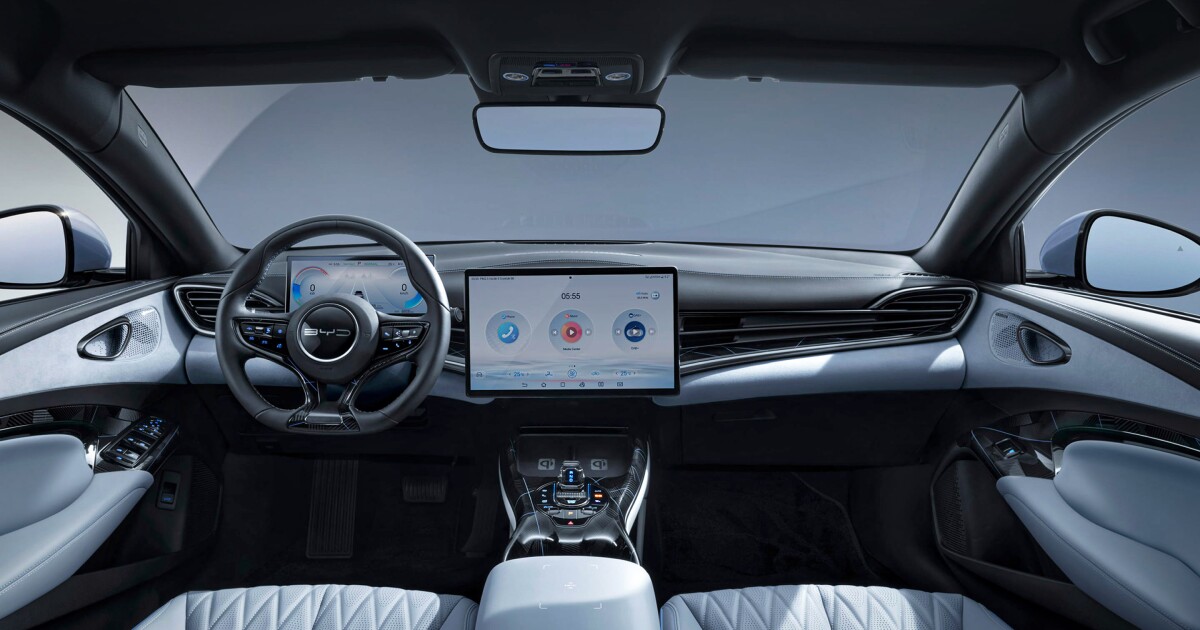An underreported regulation being proposed in the United States could have a sweeping impact on car drivers in the country, and possibly other parts of the West. But the people feeling its immediate sting will be American motorcyclists.
The rule in question would ban the sale and import of connected vehicle components with links to China or Russia. Specifically, the US Department of Commerce’s Bureau of Industry and Security (BIS) has said it “prohibit the sale or import of connected vehicles integrating specific pieces of hardware and software, or those components sold separately, with a sufficient nexus to the People’s Republic of China (PRC) or Russia.”
The BIS says it is doing this in response to serious concerns about data that may be collected and used by connected vehicles. Exactly what the BIS means by ‘connected vehicle’ is a little fuzzy, but we’ll get to that in a moment.
“Cars today have cameras, microphones, GPS tracking, and other technologies connected to the internet. It doesn’t take much imagination to understand how a foreign adversary with access to this information could pose a serious risk to both our national security and the privacy of US citizens,” explains US Secretary of Commerce, Gina Raimondo. “To address these national security concerns, the Commerce Department is taking targeted, proactive steps to keep PRC and Russian-manufactured technologies off American roads.”
BYD
For all intents and purposes, this regulation seems primarily aimed at China. China’s vehicle manufacturers have been aggressive about expanding globally – especially in the EV space. Russian manufacturers… Somewhat less so. The China focus also seems clear in comments supporting the regulation, made by US National Economic Advisor Lael Brainard.
“The Biden-Harris Administration is ensuring that Americans can drive the car of their choice safely and securely – free from risks posed by Chinese technologies,” he said.
The proposed regulation would create yet another hurdle for Chinese manufacturers eager to participate in the US market. Already it’s the case that Chinese-made EVs face a crippling 100% tariff – a tariff initially introduced during the presidency of Donald Trump but subsequently reaffirmed by the Biden administration back in September, following a long review. This consistency of policy between the two presidents is worth noting, because it suggests that whoever wins the coming election would be unlikely to veto this legislation if it’s passed.
Indeed, Kamala Harris has signaled that she largely intends to continue the trade/foreign policies of the Biden administration, and former President Trump has promised additional tariffs on Chinese goods.
The US-China relationship has grown increasingly antagonistic in recent years and seems likely to worsen, with both countries seemingly considering the possibility of military conflict – either by proxy or directly.
Meanwhile, the European Union and Canada have also implemented tariffs on Chinese EVs, with Canada matching the United States’ 100% tariff. It is not hard to imagine that some Western allies might also choose to follow suit with a ban on connected vehicles that have links to China/Russia.
According to the BIS, prohibitions on software would take effect for model year 2027 and the prohibitions on hardware would take effect for model year 2030, or 1 January 2029 for units without a model year. You can read the full text of the government’s proposal here.

YangWang
Who does this actually affect?
At present, no Chinese- or Russian-branded cars are sold in the United States (though Lincoln, Buick, Volvo, and Polestar sell a handful of cars that are manufactured in China). However, the BIS stresses that its rule would not necessarily prohibit the sale of Chinese vehicles. Instead, it would affect connected vehicles of any origin – including those manufactured in the United States – that made use of software/hardware of Chinese/Russian origin.
Which brings us back to the issue of what the US government means when it says “connected vehicle.” In reading through the text of the proposal, it feels that even the BIS is a little unsure of what it’s talking about.
At first glance, one might think that this regulation would apply only to self-driving cars or those with V2X (vehicle-to-everything) connectivity. You know, the cars of the future that are able to talk to other cars and tell them about road conditions.
Certainly, the rule would cover autonomous vehicles. The BIS is very clear in raising concerns about automated driving systems, which it defines as “hardware and software that, collectively, are capable of performing the entire dynamic driving task for a completed connected vehicle on a sustained basis.”
On the surface, the US government wants to keep China and Russia from being able to reenact that ‘it’s raining cars’ scene from The Fate of the Furious, in which Cipher hacks all the cars in New York City (including, somehow, a number of cars from the 1990s) and gets them to chase – ironically – the Russian minister of defense. Take a look:
The Fate of the Furious | Raining Cars Scene in 4K HDR
Meanwhile, the concern about certain vehicle connectivity systems seems to cover a much larger swathe of vehicles. In the text of its proposal, the BIS defines a connected vehicle as one that is “manufactured primarily for use on public streets, roads, and highways, that integrates onboard networked hardware with automotive software systems to communicate via dedicated short-range communication, cellular telecommunications connectivity, satellite communication, or other wireless spectrum connectivity with any other network or device.”
In a press release on the proposal, it highlighted concerns about “systems that (include) telematics control units, Bluetooth, cellular, satellite, and Wi-Fi modules.”
That still feels a teensy bit unclear. Does a vehicle with V2D (vehicle-to-device) connectivity apply here? That is, a vehicle with the kind of connectivity that exists when you use Bluetooth to link your phone to Apple’s CarPlay? Maybe, maybe not. The Financial Times interprets the concept of ‘connected vehicle’ as one that can receive software updates “over the air.”
If that’s correct, it would loop in a lot of vehicles – even definitely-not-self-driving vehicles like the Indian Roadmaster touring motorcycle. Indian’s system was developed by Polaris, ostensibly in Minnesota, but still, the motorcycling world is one of the places where the new rules would be most obviously felt.

CFMoto
While no Chinese car brands have yet made it Stateside, CF Moto has roughly 300 motorcycle dealerships across the country. Its bikes, many of which make use of KTM engines, have earned broad praise from riders around the world and played a major role in changing negative attitudes about Chinese quality.
CF Moto’s Telematics Box (aka T-BOX) and riding app would be subject to the ban, meaning many of the manufacturer’s models would be out of reach for US riders. It appears the same is true for up-and-coming Kove, another Chinese brand that has been impressing European riders with its rugged 800X adventure bike, which some even place above the iconic Yamaha Tenere 700.

Kove
The BIS is presently accepting public comment on its proposed regulation. It seems as if the United States is eager to implement it, but there may be quite a lot of wrangling before that happens. China has expressed displeasure with the idea, of course, and the BIS acknowledges that there a number of other issues facing this rule, including: “the challenge of implementing due diligence requirements due to the complexity of the global automotive supply chain, the need for substantial lead time to implement a regulation given the difficulty of sourcing alternative suppliers… and the potential negative impact such a regulation could have on long-term US innovation, competitiveness, and health and safety.”
Presumably there’ll be more clarity once feedback has been dealt with. Either way, it’s emblematic of the times we live in. The US doesn’t trust China – thanks in part to some of the country’s known thinking on the doctrine of ‘Unrestricted Warfare,’ which suggests that digital infrastructure and network attacks, among other things, could cripple the US without a direct confrontation.
But China is responsible for nearly a third of all global manufacturing – twice as much as the United States in second place. And the gap back to second place grows even larger when it comes to electronics. In a world where everything’s increasingly robotic and connected, anything from a cell phone tower to a robot vacuum or consumer camera drone could be viewed as a potential Manchurian candidate that could be activated to nefarious ends.
But China is so deeply embedded in global supply chains that it’ll be a logistical nightmare trying to enact bans like this, particularly in established products. Interesting times indeed!
Source: US Department of Commerce’s Bureau of Industry and Security



